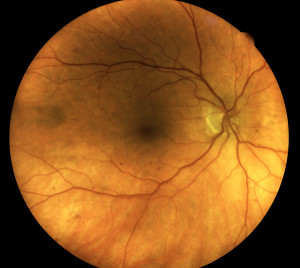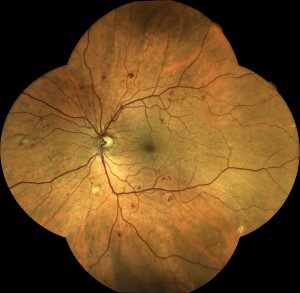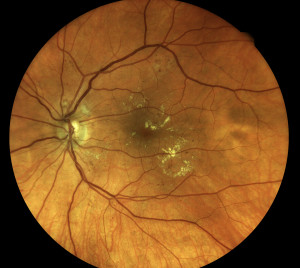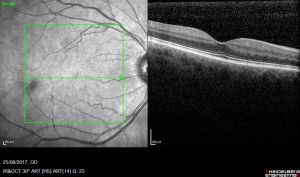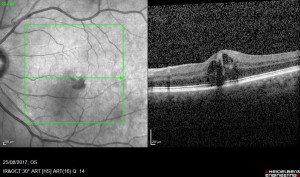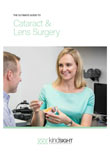Diabetes and Eyes
Tackling diabetes is one of the biggest challenges for our health system. So, how are diabetes and eyes related?
Diabetes affects approximately 1.7 million Australians, with someone newly diagnosed every five minutes. This number is expected to increase significantly over the next 20 years.
A range of eye conditions often come hand in hand with diabetes, making patients’ lives more difficult. In fact, diabetes-related eye disease is the leading cause of vision loss in working-age Australians!
In this article, we’ll explain the link between diabetes and your eyes, and what you can do to minimise the risk of developing a diabetic eye condition.
What’s the connection between diabetes and eyes?
Diabetes can affect your sight in numerous ways, for example, causing early cataracts, dry eyes, increased risk of glaucoma, and ‘diabetic retinopathy’. The danger is, quite often in the early stages, eye damage caused by diabetes doesn’t exhibit any symptoms or obvious changes to your vision.
The following symptoms aren’t necessarily specific to diabetic eye disease, however, they are some of the most common to watch out for:
- Changes in vision (blurriness, patchiness) that do not go away with prescription glasses
- Trouble seeing at night time
- The appearance of flashing lights, floaters, or spots
- Seeing halos or rings around lights
- Sudden loss of vision
What is diabetic retinopathy?
Diabetes damages the small blood vessels in the body, including the retina which is also known as ‘the camera film of the eye’. These damaged blood vessels become leaky and stop the delivery of vital oxygen and nutrients to the cells. Eventually, new blood vessels are encouraged to grow, but these are abnormal and very fragile. As a result, they bleed easily or pull on the retina, tearing and detaching it.
15% of Australians who have diabetes will have signs of diabetic retinopathy. Therefore the reality is, the longer you have diabetes, and the less well-controlled it is, the more likely you are to develop the condition.
Minimising damage
The key to maintaining eye health is good long-term control of diabetes, which means keeping your blood sugar levels within the normal range. This can be achieved through a combination of diet and medications, either oral tablets or insulin, and working closely with your GP or Endocrinologist.
In addition, you should:
- avoid smoking
- keep control of your blood pressure and cholesterol
- maintain a healthy weight
- exercise regularly
Sight-threatening eye disease requires specialised treatments. Treatments may include laser to the retina, injections of medication into the eye and sometimes surgery, e.g. vitrectomy for haemorrhage or retinal detachment.
Early detection is key
The good news is that modern methods for early detection, diagnosis, management and treatment of diabetic retinopathy give patients a high chance of retaining their sight.
Early detection is critical to achieving better outcomes! This can’t be stressed enough, particularly because changes to your sight can be happening without you knowing about it, often with no pain or noticeable impact on your vision. As these changes continue over time, the risk increases of developing diabetic retinopathy, complete retinal detachment or early cataracts. Don’t wait for symptoms to develop. Stay on top of your eye check-ups and maintain a healthy lifestyle.
How can KindSIGHT help?
KindSIGHT uses state-of-the-art technology designed to detect diabetic eye disease. Our technology includes advanced analysis of the retina using OCT, fluorescein angiography and wide-field retinal photography.
Making an appointment with an ophthalmologist at KindSIGHT means immediate detection and initiation of any necessary treatment before the condition worsens. KindSIGHT prides itself on the fact that if treatment is needed, it can usually be performed straight away, and on the same day as your consultation.
As a medical specialists, KindSIGHT is well placed to work closely with other doctors involved in patient care, e.g. GPs, Endocrinologists and Renal Physicians.
Schedule a regular eye check-up!
The number of people diagnosed with diabetes continues to increase and unfortunately, it remains a common cause of vision loss in Australia. If you are living with diabetes, don’t wait until it’s too late.
If you are curious about what a diabetic eye looks like, then here are some of the images we have taken at KindSIGHT:
- Normal retina
- Mild diabetic retinopathy. Multiple small haemorrhages
- Moderate diabetic retinopathy. Many small and medium sized haemorrhages
- Diabetic changes at the macula. Yellow areas are fats that leaked into retina from damaged blood vessels
- Normal macula (central vision area) appearance on OCT scan
- Diabetic swelling of the macula on OCT scan
- Fluoroscein angiography (dye test). The ‘white dots’ are leaky blood vessels which have been damaged by diabetes.
Book regular appointments to have your eyes checked with your eye care provider. If you’re concerned your vision is being affected, schedule a consultation with our team today.



